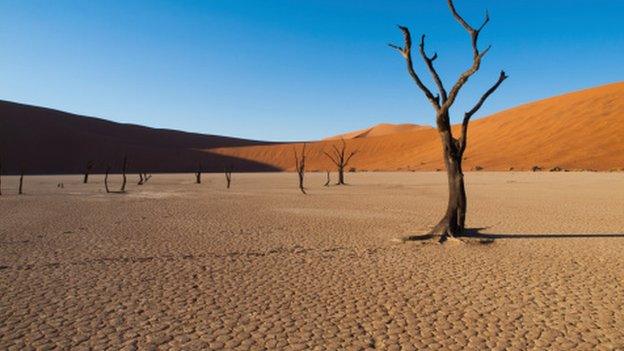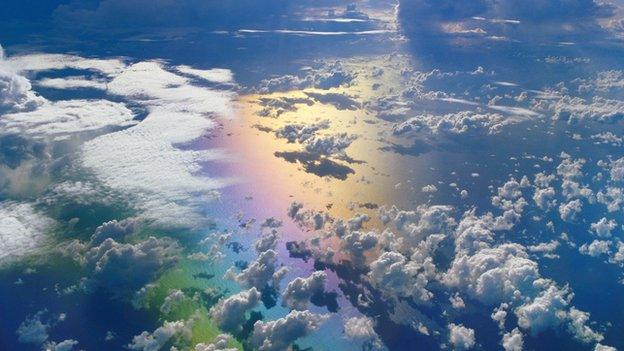How could we intervene to change the climate?
- Published

Could action by one country cause rains to stop in another?
Imagine the trouble that would ensue if China resorted to desperate measures to cool its climate but the result was that the Indian Monsoon suddenly failed.
Or that India tried to head off a rise in temperatures only to find that Pakistan suffered from massive flooding.
Or that the United States took drastic action to fight global warming and then saw that great tracts of Africa were suddenly left without any rain.
These are some of the nightmare scenarios conjured up by the latest thinking on what might go wrong if we try to intervene in our climate through what is known as geo-engineering.
Ideas range from trying to block the Sun's rays with sulphur particles in the upper atmosphere to making the seas and deserts more reflective to forests of artificial trees soaking up carbon dioxide -concepts that seem so outlandish that many refuse to take them seriously.
Back in early 2009, at a climate science conference in Denmark, I recall the almost sheepish way with which researchers scheduled a session on the subject.
The event's organiser, an American professor, told me that "no one in their right mind would want to think about these ideas but we may find that we have to".
For some, any notion of planes spewing out particles to reflect sunshine or fleets of ships spraying up seawater to make clouds brighter is so unrealistic that it does not deserve serious thought - and, worse, distracts from proper debate about global warming.
In this view, the core task remains persuading countries and companies to cut their emissions of carbon dioxide - and that casual talk of easy technological fixes takes the pressure off that effort because it seems to offer a get-out-jail-free card.
A cause for war?
Yet another source of opposition is from those who fear that intervening with the climate is bound to backfire and that the law of unintended consequences means that the harm caused will be far worse than expected.
During a debate at a conservation conference in Barcelona in 2010, environmental campaigners were outraged by plans by a private company to conduct geo-engineering experiments in the ocean.

Monsoon clouds over the Indian Ocean
The idea was to see if carbon dioxide could be trapped and buried by fertilising the waters with iron to encourage plankton to bloom.
Similar experiments carried out by an Indian-German team did not work as well as hoped.
Would solar shielding launched by one country trigger a drought in another? Would that be a cause for war? Would anyone ever really know that the geo-engineering was to blame?
If planes were launched to make the stratosphere more reflective, how long would it take for them to have a cooling effect? What if it took years or even decades to know if the technique was working or that it was causing weather turmoil elsewhere?
And, in regions of the world already fraught with tension, how would it look to a nervous country if a far larger neighbour filled the skies with squadrons of jets?
Inevitably, given the scale of any of these operations, the military would have to be involved so, even if the purpose was genuinely benign, and was being conducted in the global cause of cooling the planet, the deployments might easily look like an act of war.
Diplomatic issues 'the greatest'

Would it really be possible to have planes spewing out particles to reflect sunshine?
One answer is that if climate change proves to be as far-reaching and pervasive as some projections suggest, it is bound to escalate tensions regardless of any geo-engineering: that as pressures mount on vulnerable areas, vast populations could be on the move anyway, with or without attempts to block the sun.
The authors of the recent research are adamant that the risks are so great that any studies or experiments need to be as open as possible - and that actual operations, however distant in the future, must be governed by international treaty.
But that is a very big ask.
Of all the challenges with geo-engineering - the technological hurdles, the enormous gamble with weather patterns, the dangers of conflict - perhaps the greatest is diplomatic.
The past 22 years have seen the world repeatedly fail to agree to cut greenhouse gases to tackle global warming.
How much harder would it be to get it to agree on last-ditch measures that many would brand as hare-brained and dangerous?
But what if, many decades ahead, there was no alternative?